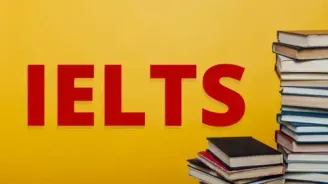What’s in the IELTS Academic Reading?
The IELTS Academic Reading section assesses your ability to understand and interpret complex academic texts. It consists of 3 sections, typically featuring one long passage, each sourced from books, journals, magazines, newspapers and online resources.
Each section gets harder as you go, so save time for the tough questions. Try to limit each section to 20 minutes. You might finish the first part faster and have extra time for the others.
Let’s take a quick look at the IELTS Reading overview.
Understanding the IELTS Reading pattern and question types is essential for effective preparation. The IELTS Academic Reading test is particularly suited for students aiming to study in English-speaking universities or higher education institutions.
Let’s explore the IELTS Academic Reading pattern in detail.
IELTS Academic Reading Question Types
The IELTS Reading module features a variety of question types designed to assess different reading skills. Here, we’ve explained all the reading question types you’ll encounter in your IELTS Academic Reading test!
However, you must keep in mind that though some questions are common for both types of IELTS exam, but the source of passage, complexity and the subject of discussion will differ.
And with that, let’s dive into the question types!
Free IELTS Academic Reading Practice Test
Preparing for the IELTS Academic Reading test can be challenging, but with consistent practice, you can ace it. The practice tests can help you familiarise yourself with the format and question types.
Below is a curated list of the top 10 IELTS Academic Reading mock tests with answers for your reference.
IELTS Reading Practice Test 1
IELTS Reading Practice Test 2
IELTS Reading Practice Test 3
IELTS Reading Practice Test 4
IELTS Reading Practice Test 5
IELTS Reading Practice Test 6
IELTS Reading Practice Test 7
IELTS Reading Practice Test 8
IELTS Reading Practice Test 9
IELTS Reading Practice Test 10
Top 5 IELTS Academic Reading Tips for 2025
Achieving a high IELTS Reading band score requires strategic preparation. By following the right techniques, you can boost your performance and improve your ability to locate answers quickly.
Here are the top 5 tips to help you excel.
- Quickly skim through the passage to get the main idea and scan for specific keywords when answering questions.
- Familiarise yourself with various question formats such as multiple-choice, matching headings, and True/False/Not Given to improve accuracy.
- Spend no more than 20 minutes per passage and move on if stuck.
- Build a strong IELTS Reading vocabulary to understand complex academic texts easily.
- Regularly take full-length mock tests under exam conditions.
Common Mistakes to Avoid
- Reading the entire passage word-for-word wastes time and reduces efficiency.
- Ignoring instructions and missing keywords like "NO MORE THAN TWO WORDS" can lead to incorrect answers.
- Misunderstanding True/False/Not Given question type can be avoided by distinguishing between "False" (contradictory) and "Not Given" (information missing).
- Don't spend too much time on one question, If you're stuck, move on and return to difficult questions if time permits.
- Guessing without thinking should be avoided by using elimination methods.
Difference between Academic & General Training
While both IELTS Academic and IELTS General Reading assess your reading skills through 40 questions in 60 minutes, but IELTS reading exam pattern differ in terms of content and question types.
Here’s a comparison to help you understand the key differences:
How to Get a Good Score in IELTS Academic Reading?
Scoring well in the IELTS Academic Reading section requires a combination of strong reading strategies, effective time management, and continuous practice. One of the best ways to ensure success is by seeking expert guidance and structured learning support.
How can Leap Scholar be of help?
LeapScholar offers comprehensive resources and guidance to assist you in your IELTS preparation journey. Here’s how it can help you:
- Expert-Led Training: Learn from top educators with years of IELTS coaching experience.
- Comprehensive Study Materials: Get access to high-quality reading passages, practice tests, and strategies.
- Personalised Feedback: Identify your weaknesses and improve with expert guidance.
- Mock Tests & Performance Analysis: Build confidence with realistic test simulations.
- Flexible Learning Options: Choose from online and offline classes to fit your schedule.
Join our IELTS free masterclass trusted by thousands of students and take a step closer to your target band score!










